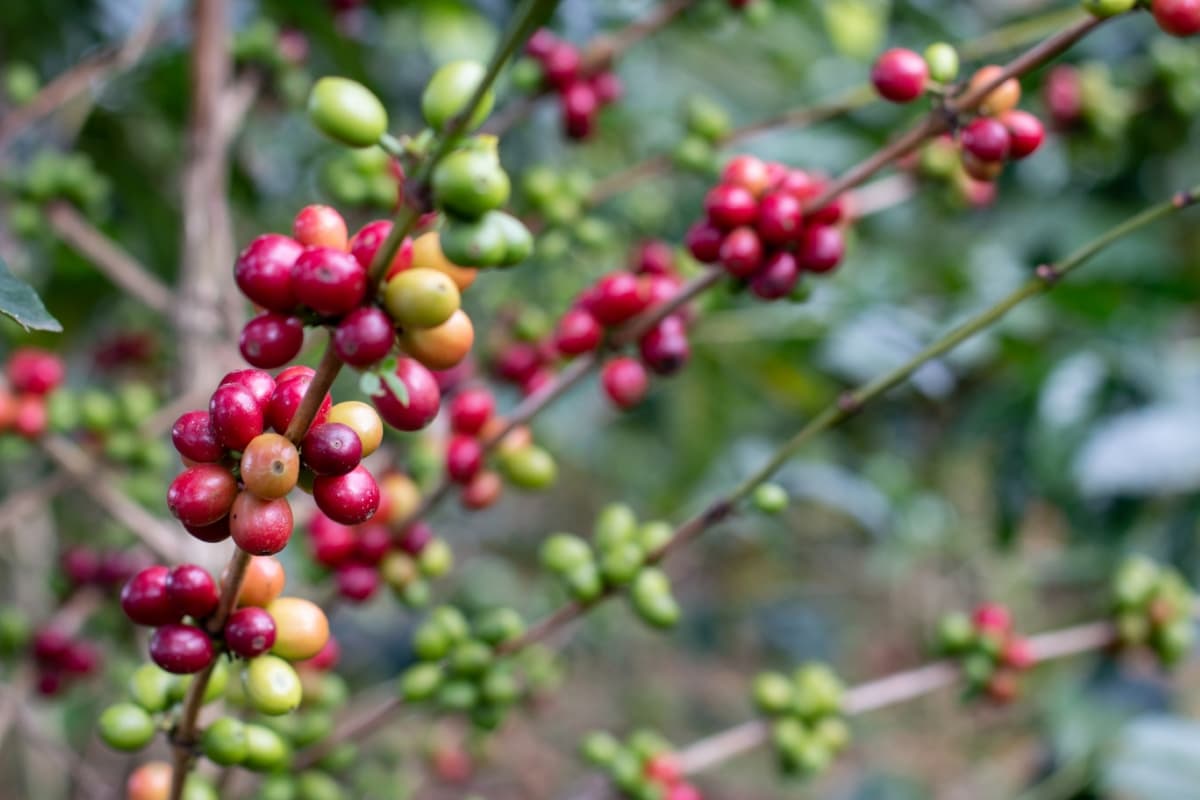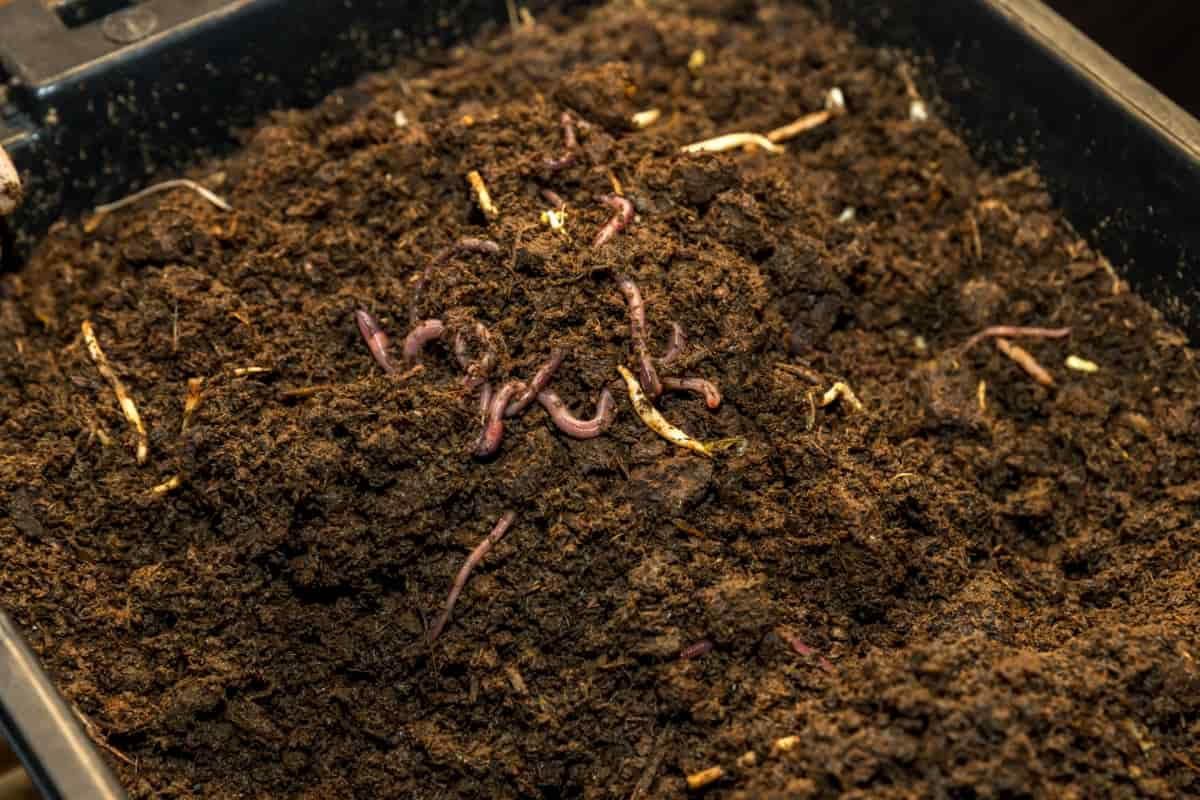Coffee trees require specific nutrients to thrive, including nitrogen, phosphorus, potassium, magnesium, and calcium. Nitrogen is essential for leaf and shoot growth, while phosphorus promotes root development and flowering. Potassium helps to resist diseases and promotes overall plant health. Magnesium aids in chlorophyll production, while calcium strengthens cell walls.

Additionally, coffee trees benefit from trace elements like iron, manganese, zinc, and copper. It is important to provide these nutrients through proper fertilization methods, such as organic matter incorporation or foliar spraying. Farmers can ensure healthy growth and maximize their yield by meeting the nutritional requirements of coffee trees.
Coffee Tree Fertilization Requirements
Essential Macronutrients for Coffee Tree Fertilization: Nitrogen, Phosphorus, and Potassium
Nitrogen(N), phosphorus(P), and potassium(K) are essential macronutrients for coffee tree fertilization. These elements play a crucial role in the growth and development of coffee trees, ensuring optimal yield and quality. Nitrogen promotes leaf and stems growth, while phosphorus promotes root development and flowering.
Potassium helps regulate water uptake and enhances fruit quality. Coffee trees require a balanced supply of these macronutrients to thrive and produce high-quality beans. Adequate fertilization with nitrogen, phosphorus, and potassium is essential for maximizing coffee tree productivity and ensuring the sustainability of coffee plantations.
The Role of Micronutrients in Coffee Tree Fertilization: Iron, Zinc, and Manganese
In addition to essential macronutrients, coffee trees also require micronutrients for optimal growth and productivity. Iron, zinc, and manganese are important micronutrients in coffee tree fertilization. Iron is vital for chlorophyll production and photosynthesis, while zinc is involved in enzyme activation and carbohydrate metabolism.
Manganese promotes the synthesis of chlorophyll and the regulation of plant hormones. These micronutrients are required in small quantities but are crucial for the overall health and vigor of coffee trees. Ensuring a balanced supply of iron, zinc, and manganese is essential for promoting healthy growth, disease resistance, and optimal yield in coffee plantations.
Organic Vs. Synthetic Fertilizers: Pros and Cons for Coffee Tree Cultivation
Organic and synthetic fertilizers are commonly used in coffee tree cultivation, each with pros and cons. Organic fertilizers are soil and environmentally-friendly fertilizers produced from natural sources. For example, compost, manure, seaweed extract, green sand, rock phosphate, and bone meal.
One advantage of organic fertilizers is their ability to improve soil structure and enhance the fertility of soil over time. They also promote long-term sustainability by minimizing the risk of chemical runoff and groundwater contamination. However, organic fertilizers may have slower release rates, requiring more frequent applications to maintain nutrient levels.
In case you missed it: Are Coffee Grounds Good for Tomato Plants: Benefits, How and When to Apply to Tomatoes

Synthetic fertilizers are chemically manufactured and offer immediate nutrient availability to coffee trees. They are often formulated to deliver precise nutrient ratios, ensuring optimal plant growth. Synthetic fertilizers can also be more cost-effective and convenient due to their concentrated form. However, excessive and improper use of synthetic fertilizers may lead to nutrient imbalances, soil degradation, and environmental pollution.
Soil pH and Coffee Tree Fertilization: Finding the Right Balance
Coffee trees generally thrive in slightly acidic soil, with a pH range between 6 to 6.5. This pH level allows for optimal nutrient uptake, ensuring that coffee trees receive the necessary macronutrients and micronutrients for healthy growth. When the soil pH deviates from this range, nutrient deficiencies or toxicities may occur, reducing coffee yield and quality.
To maintain the right balance, coffee farmers must regularly monitor and adjust the soil pH. Soil testing is an effective tool to determine the current pH level and guide fertilization practices. If the soil pH is too low (acidic), adding agricultural lime can help raise the pH. Conversely, if the soil pH is too high (alkaline), applying elemental sulfur or organic matter can help lower the pH.
Fertilization should be tailored to the specific nutrient requirements of coffee trees based on soil pH. Acidic soils may require additional calcium, magnesium, and phosphorus supplementation, while alkaline soils may benefit from increased iron, manganese, and zinc applications. Balanced fertilization ensures that the coffee trees have access to all essential nutrients, promoting vigorous growth, disease resistance, and high-quality coffee production.
Timing and Frequency of Fertilizer Application for Coffee Trees
Timing and frequency of fertilizer application are crucial for optimal growth and coffee tree yield. For coffee trees, it is recommended to apply fertilizer in three main stages: pre-flowering, post-flowering, and post-harvest. During the pre-flowering stage, a balanced NPK ratio of 10:6:4 is ideal to promote vegetative growth and enhance flowering. Post-flowering, a higher phosphorus ratio of 5:10:5 is required to support fruit development. Lastly, post-harvest, a lower NPK ratio of 10:5:10 is recommended to restore nutrient reserves and prepare for the next cycle.
Foliar Feeding as a Supplemental Fertilization Method for Coffee Trees
Foliar feeding is a beneficial method of supplementing the fertilization process for coffee trees. This technique involves applying nutrients directly to the leaves of the plants, allowing for quick absorption and utilization. It is especially useful when the soil is deficient in certain nutrients, or the trees require an immediate nutrient boost. Several foliar sprays have been developed to address specific nutrient deficiencies in coffee trees.
In case you missed it: 1 Acre Coffee Cultivation Project Report in India: Production Cost and Profit

Some popular foliar sprays for coffee trees include seaweed extracts, fish emulsion, compost tea, and micronutrient blends. These sprays provide a range of essential nutrients such as nitrogen, phosphorus, potassium, iron, and manganese. When used appropriately, foliar sprays can significantly contribute to the overall health and vigor of coffee trees, resulting in higher yields and better-quality coffee beans.
Understanding Nutrient Deficiencies in Coffee Trees and How to Correct Them
Nitrogen Deficiency
- Symptoms: Yellowing of older leaves, stunted growth, reduced yield.
- Correction: Apply ammonium sulfate or urea
Phosphorus Deficiency
- Symptoms: Dark green leaves with purple veins, delayed flowering, poor fruit development.
- Correction: Apply rock phosphate or superphosphate
Potassium Deficiency
- Symptoms: Chlorosis or yellowing of leaf margins, brown scorching, weak branches.
- Correction: Apply potassium sulfate or potassium chloride fertilizers.
Magnesium Deficiency
- Symptoms: Interveinal chlorosis, yellowing between leaf veins, leaf curling.
- Correction: Apply magnesium sulfate or dolomitic lime
Iron Deficiency
- Symptoms: Yellowing of young leaves while veins remain green, leaf tip burn.
- Correction: Apply chelated iron foliar sprays or apply iron sulfate to the soil
Zinc Deficiency
- Symptoms: Reduced leaf size, interveinal chlorosis, malformed leaves.
- Correction: Apply zinc sulfate or zinc chelates to the soil or as foliar sprays
Manganese Deficiency
- Symptoms: Yellowing between veins, leaf curling, reduced growth.
- Correction: Apply manganese sulfate or manganese chelates to the soil or as foliar sprays
Calcium Deficiency
- Symptoms: Stunted growth, leaf tip burn, blossom end rot.
- Correction: Apply calcium carbonate or gypsum to the soil
Copper Deficiency
- Symptoms: Wilting, dieback of shoots, pale leaves.
- Correction: Apply copper sulfate or copper chelates to the soil or as foliar sprays.
Boron Deficiency
- Symptoms: Distorted growth, yellowing between veins, poor fruit set.
- Correction: Apply borax or boric acid to the soil or as foliar sprays
Sustainable Fertilization Practices for Coffee Tree Cultivation
Sustainable fertilization practices are essential for the cultivation of coffee trees. To ensure the health and productivity of coffee plants while minimizing environmental impact, several practices can be implemented.
- Firstly, organic fertilizers such as compost and manure can be utilized, reducing reliance on synthetic chemicals.
- Secondly, practicing precision application techniques can minimize excess fertilizer runoff, preventing water pollution.
- Additionally, utilizing cover crops can provide natural sources of nutrients while reducing soil erosion.
- Lastly, implementing soil testing and nutrient management plans can help optimize fertilizer use and prevent over-application.
In case you missed it: How to Make Coffee Grounds Compost Fertilizer: Homemade Recipe, DIY for Container, Indoor, and Backyard Garden Plants

Conclusion
Understanding the nutrient needs of coffee trees and implementing a well-balanced fertilization program is essential for achieving optimal yields and quality in coffee cultivation. Conducting regular soil analysis and adjusting the fertilizer application accordingly will help ensure the long-term success of coffee tree farming.
- Feed Your Flock for Less: Top 10 Tips to Save on Chicken Feed
- Ultimate Guide to Ossabaw Island Hog: Breeding, Raising, Diet, and Care
- Hatching Answers: The Top 10 Reasons Your Chickens Aren’t Laying Eggs
- Eggs and Economics: Breaking Down the Cost of Raising Backyard Chickens
- Defend Your Greens: Proven Methods to Keep Iguanas Out of Your Garden
- Ultimate Guide to Cinnamon Queen Chicken: A Comprehensive Guide for Beginners
- Ultimate Guide to California Tan Chicken: Breeding, Raising, Diet, Egg-Production and Care
- Ultimate Guide to Marsh Daisy Chicken: Breeding, Raising, Diet, and Care
- 10 Types of Chicken Farming Businesses You Can Start for Profits